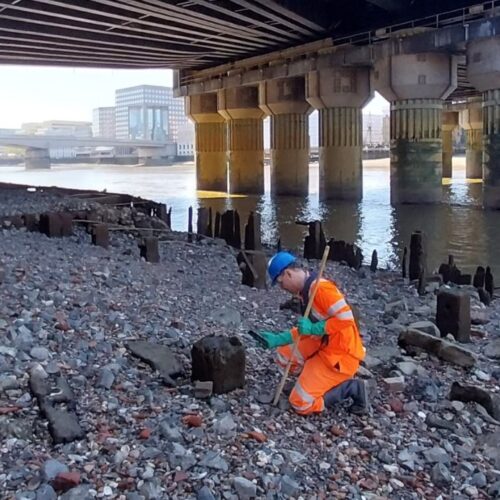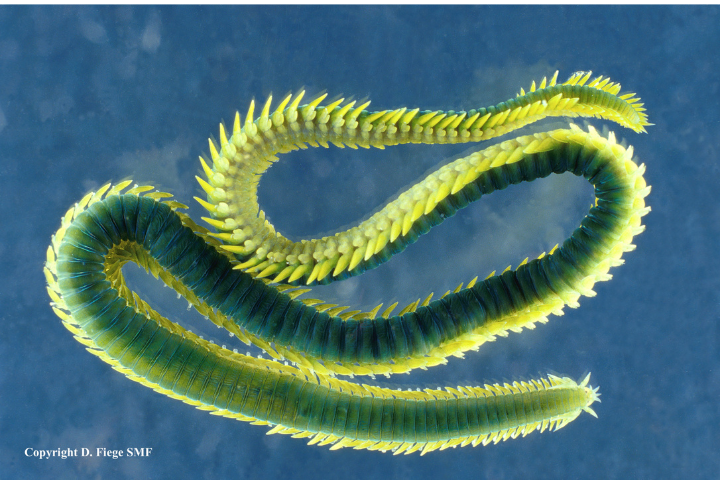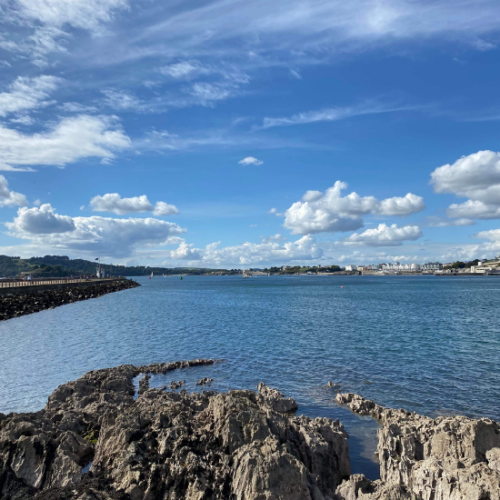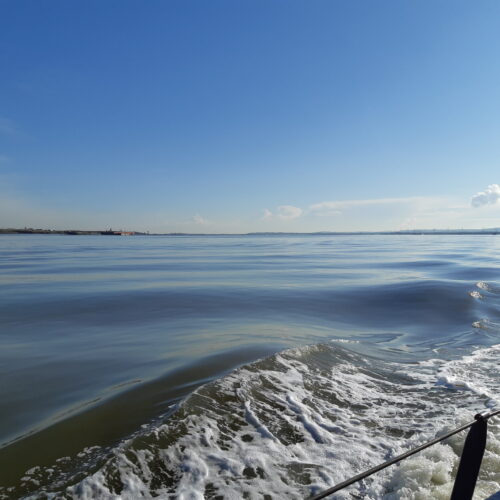Casts from the lugworm Arenicola marina are a common sight on sandy beaches and estuaries around the UK, where they are often sought by anglers for use as bait. However, these polychaete worms are important for a wide range of reasons, not just for a hook, line and sinker.
A. marina dig a J-shaped burrow around 20cm deep with their heads at the bottom and their tails rising towards the surface. Arenicola eat sand to digest the micro-organisms and organic matter coating the sediment grains. As they ingest the sand, a depression often forms on the surface above the head end of the burrow; periodically the worms raise their tail to the surface to excrete sand, leaving characteristic coiled casts outside the tail end of the burrow. These burrows form a habitat which other species can inhabit; one study found 26 species of flatworm alone sharing lugworm burrows [1].
Lugworms also form an important food source for a range of coastal animals including wading birds, fish and other worms. In some instances, the whole worm is eaten but often predators only manage to pull off the tail as the lugworm deposits its cast, known as ‘tail nipping’. Tail nipping isn’t lethal to a lugworm as it can compensate for losing some of its tail segments by increasing the size of the remaining segments [2].
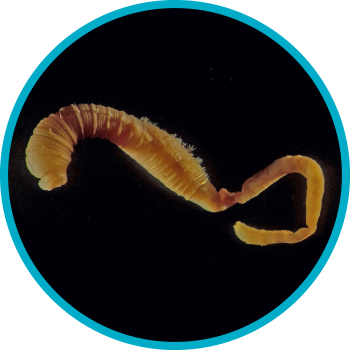
As they spend the majority of their lives in their burrow, lugworms need to pump water from the surface though the burrow to bring fresh oxygenated water to their gills. In doing so, they increase oxygen transfer from the water column to the sediment up to 20-fold [3]. Some of this oxygen-rich water percolates through the walls of their tubes and into the surrounding sand, benefitting other organisms in what would otherwise be an oxygen-deprived habitat. This aeration of their burrows also increases aerobic decomposition within the surrounding sediment, reducing the amount of methane which would otherwise be produced by anaerobic decomposition on beaches where lugworms are present [3].
The way in which lugworms move buried sediment up to the surface while feeding can also impact their ecosystem. This natural transportation of sediment – known as bioturbation – has a major role in increasing the biodiversity of a habitat. Bioturbation alters the availability of key nutrients for other animals and helps to drive important processes such as the nitrogen cycle. While these impacts may seem small, occurring on a scale of centimetres, lugworms can reach a population density of 150 individuals per m2 [4] and can account for as much as 30% of the total biomass of beaches [5]. Because these small worms can become so abundant and play a relatively unique role, they have a big impact on their environment.
These unassuming annelids have even been found to contain multiple antibacterial compounds [6], meaning they could potentially be a source of novel antibiotics for humans. Despite being rarely seen, they certainly have a big impact on the world around them.
Get in touch
If you’ve found this article useful for one of your projects or would like further information, please get in touch.
[2] De Vlas, J., 1979. Secondary production by tail regeneration in a tidal flat population of lugworms (Arenicola marina), cropped by flatfish. Netherlands Journal of Sea Research, 13(3-4), pp.362-393
[3] Riisgard, H.U. and Banta, G.T., 1998. Irrigation and deposit feeding by the lugworm Arenicola marina, characteristics and secondary effects on the environment. A review of current knowledge. Vie et milieu, 48(4), pp.243-258.
[4] Fish, J.D & Fish, S (1996). ‘A Students guide to the seashore’ 2nd Ed. Cambridge University Press.
[5] Reise, K., Herre, E. and Sturm, M., (1994). Biomass and abundance of macrofauna in intertidal sediments of Königshafen in the northern Wadden Sea. Helgoländer Meeresuntersuchungen, 48(2), pp.201-215.
[6] William R. Kem, in Handbook of Biologically Active Peptides (Second Edition), 2013. Kastin, A. ed., 2013. Handbook of biologically active peptides. Academic press.


